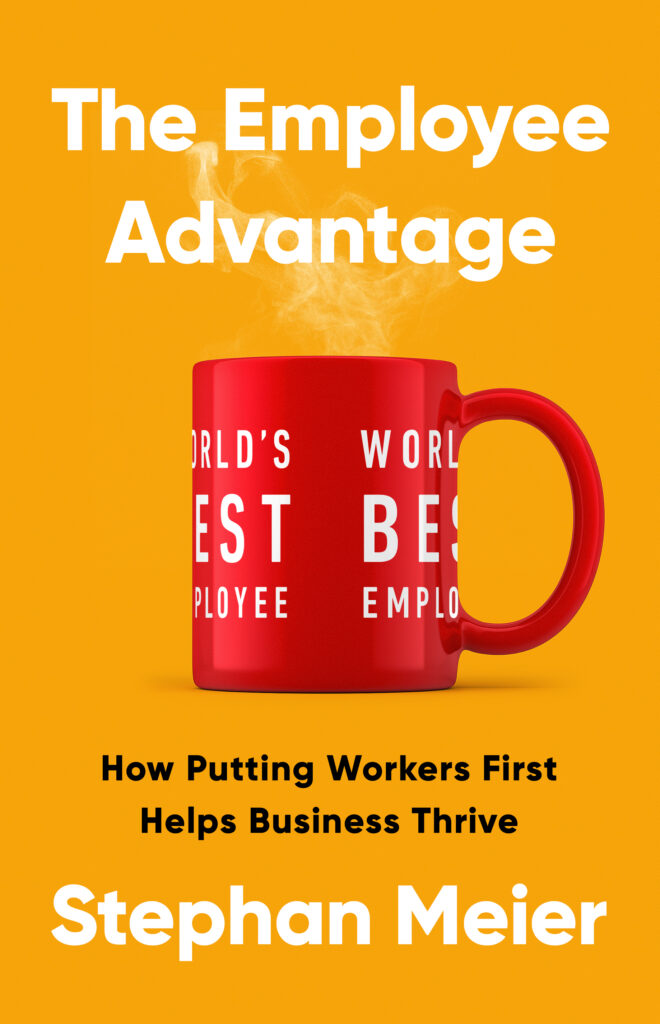


As we know, in the quest for growth, innovation and constant improvement, it is essential to recognize that great ideas can emerge from the most unexpected corners of an organization. By providing autonomy and fostering an environment of widespread ideation and encouraging creativity, companies have the potential to unlock a treasure trove of unconventional ideas that can revolutionize their industries. Think about 3M’s Post-it note and Google’s Gmail app, which were dreamed up by employees when they were encouraged to work on their own personal projects. Those and other innovations stand as a testament to the transformative power of giving individuals the opportunity to contribute their unique perspectives and unleash their creative potential.
The benefit of empowering employees goes beyond fostering product innovation; it also plays a vital role in process improvement and in elevating customer service to new heights. A study comparing two Mexican manufacturers of Nike T-shirts provides an excellent illustration of this. The two plants basically produce the same T-shirts but with very different models of autonomy for their workers. One (Plant A) uses the Toyota model and provides workers with greater autonomy and power on the shop floor. Workers are trained to stop production when they see defects, and they work in autonomous units that participate in decisions affecting performance targets and work techniques. Plant B, on the other hand, uses a more conventional management structure and workers have no voice in production decisions or any other part of their work. The productivity results are stark: Plant A uses only six workers per assembly line compared to ten in Plant B. Workers in those lines in Plant A produce 150 shirts per worker per day compared to only 80 in Plant B. Labor costs per T-shirt are 11 cents for Plant A compared to 18 cents for Plant B. Autonomy works and is a win-win for workers (who can also be paid more) in the T-shirt plant.
Organizations such as Southwest Airlines and Zappos.com have embraced the philosophy of empowering their employees to deliver exceptional customer experiences. Both give their employees (cabin crew or call center staff) a lot of autonomy to do whatever it takes to wow their customers. The often improvised safety announcements that cabin crews at Southwest come up with (which sometimes go viral) are very funny examples of the benefit of tapping into employee creativity. The high customer service ratings and customer loyalty scores show the overall benefit. By trusting their front-line staff to make autonomous decisions and go the extra mile for customers, these companies have created a culture of exceptional service that sets them apart from their competitors.
Remember, though, that empowering employees does not diminish the need for effective leadership. Leaders must play an engaged coaching role to ensure that empowerment aligns with their organizations’ goals and values, which involves both organizational-level adjustments and shifts in individual leadership styles.
GE Appliances (GEA), the division of GE that produces refrigerators, air conditioners and washing machines (called “white goods” because of their typical color), has an interest in encouraging innovation. After all, that is one of the keys to success in its industry. Undoubtedly, the leadership always believed that they provided their employees with the freedom to generate innovative ideas. But there was a problem: their approach was not working.
In 2016, GEA was bought by Haier, a successful Chinese white goods producer that had transitioned from producing small refrigerators (think cheap mini-fridges for dorm rooms) to dominance of the global white goods industry. But while Haier was globally dominant in 2016, it had not yet achieved much penetration in the U.S. market. That came to an end with the $5.6 billion acquisition of GEA, which raised the question: Would Haier be able to continue to grow in this new arena? It didn’t take long for investors to discover the answer: Haier changed the way GEA was run and achieved double-digit growth in the first four years that Haier owned it—all by providing real autonomy.
At the core of the Haier model is the concept of RenDanHeYi. Ren (人) means “human” or “employee,” dan (单) means “user,” he (合) means “integrate” or “together,” and yi (一) means “unity” or “becoming one.” The management concept that Haier’s founder, chairman, and CEO, Zhang Ruimin, established in 2005 is about empowering its employees to please its customers and users without any distance between them; that is, no middle managers or top management who tell the different business units how to do their job. Zhang Ruimin realized that in today’s fast-moving and highly uncertain market environments, top-down and command-and-control management cannot keep up with the speed and can even kill motivation and innovation.
To create RenDanHeYi, Haier is all about autonomous teams. It is organized into four thousand microenterprises (ME) that each have a small number of employees. Some of them are market facing and are concerned with selling the final product to a consumer, such as refrigerators to college kids. Others are internal focused and produce and sell components or services to ME within the organization. The company sets ambitious leading targets, but each ME has full autonomy to do whatever is required to achieve these targets. By doing so, Haier got rid of bureaucracy and middle managers. In return, according to the Harvard Business Review, this new management approach “makes employees energetic entrepreneurs directly accountable to customers and organizes them in an open ecosystem of users, inventors, and partners.”
Haier introduced this approach to GEA, leading to a complete transformation of the organization. GEA adopted a structure with multiple MEs, where each ME was granted full autonomy. The outcomes of this transformation serve as evidence of the model’s success, highlighting the power of harnessing human motivation. However, implementing such a model is not easy. It contradicts traditional management models that rely on top-down and command-and-control structures that have been in place for decades. Zhang Ruimin said: “Companies try to learn from us and say it is quite difficult to replicate our model. I reply that adopting our model requires giving up powers, including decision making, hiring and firing, and setting compensation. You must delegate all those powers to the microenterprises themselves. One boss asked me how he could control his employees without those three powers. Well, I believe that giving up that control is actually an important part of the model.” Providing autonomy requires structural changes that shift the power from management to employees.
To empower employees requires more involvement from leaders instead of less. Leadership has two dimensions: how frequently a leader checks in and how much guidance a leader offers. The right amount of each determines whether a leader empowers the employees.
A leader who is frequently involved and controlling, providing too much guidance and direction, is the much-hated but very common micromanager. You might, as an employer, have some micromanager tendencies yourself or have worked in the past for a boss who has them. These leaders need to be involved in every decision and use their engagement to control their employees. This leadership style kills motivation and is closest to Taylorism. For these managers, the increased availability of detailed data about employees is a micromanager dream come true: it allows them to better control and micromanage their workforce. The result is that employees are even less motivated.
McKinsey has a term for the manager type who provides autonomy but is not frequently involved: a cheerleader. Under cheerleaders, employees have a lot of autonomy but lack sufficient guidance, and as a result, the manager needs to intervene, not only to offer motivation but also to address issues when they arise—and they will. Interactions between leaders and employees primarily revolve around dealing with mistakes and can become problematic and even toxic. The notion that granting autonomy equates to disengagement is a misconception. The danger lies in leaders transitioning from micromanagers to mere cheerleaders who provide motivation but only infrequently check in on progress. This approach can potentially lead to disaster, as it lacks the necessary guidance and support that employees need to excel.
Effective leadership in an empowered environment requires clear communication of goals, allowing employees the freedom to execute their roles while providing support when needed. Leaders need to step up and be engaged. They need to be very open and transparent. At Google, empowering employees is central to their people strategy—in addition to their 20 percent rule. And transparency is key. In his book Work Rules!, Google’s former HR chief, or “Head of People,” Lazlo Bock describes the virtues of transparency: “Openness demonstrates to your employees that you believe they are trustworthy and have good judgment. And giving them more context about what is happening (and how and why) will enable them to do their jobs more effectively and contribute in ways a top- down manager couldn’t anticipate.”
Empowering employees and setting them up for success requires more frequent check-ins and feedback. It involves redefining job descriptions to be broader, altering organizational structures to remove bureaucratic obstacles, and focusing on enabling employees to excel in their roles. A leader’s role then becomes that of a coach, who provides guidance and constant feedback and removes barriers that hinder productivity, without being controlling. By taking on this coaching role, leaders can unleash the full potential of their employees and drive exceptional performance.
The distinction between a leader who acts as a coach, rather than just a cheerleader, lies in consistently providing feedback to all employees, not just those who are facing performance challenges. Since cheerleaders check in infrequently, they inevitably need to step in when things go sour. As a result, they will mainly talk to underperforming employees. A large spa and massage chain in China conducted a six- month experiment with more than 10,000 workers to assess the effects of two distinct types of conversations held between managers and employees. Managers were required to engage in individual conversations, lasting 15 to 20 minutes, once a week with a specific group of employees selected from their regular team of approximately 45 workers. In one condition (which I call the coach condition), managers were given names that were randomly selected from their team. Employees who got selected got some extra attention from their manager. In the other condition (which I call cheerleader), the employees were selected based on their low level of motivation. Under this condition, only the problematic employees got to have a talk. Then, both of these conditions were compared to a third group in which no extra manager- employee conversations were implemented.
The results support the view that a coaching approach is more motivating. In the stores in which random employees got special attention from the manager, store revenue increased 6.6 percent and employee attrition dropped by 13.9 percent compared to the control group. Targeting lower-performing employees has no effect on revenue or attrition. Struggling employees in the cheerleader group still expressed appreciation in surveys for the extra attention they received compared to the control stores where no extra conversations between managers and employees were initiated. But compared to the coaching approach, they had fewer positive views about the manager. Having a coach as a manager who supports everybody was very motivating and impacted performance positively.
Technology can play a valuable role in fostering engaged autonomy by empowering employees while simultaneously offering regular feedback and guidance. The abundance of available data enables leaders to provide the necessary feedback for autonomous employees to continually enhance their performance, all without feeling controlling. The largest home health-care provider in the Netherlands shows how it can be done. The company, Buurtzorg, employs more than 10,000 nurses who provide home health-care services ranging from taking blood and administering medication to helping clients with daily tasks such as eating or personal hygiene. The home care market is estimated to be globally a $362 billion revenue market and is expected to grow by almost eight percent in the coming years. A number of trends, such as an aging population and a rise in telehealth opportunities, have contributed to its growth. But the market also faces challenges, particularly rising costs and scarcity in nursing staff. Buurtzorg, established in 2006, employs a management model in this market that is now seen globally as a potential solution for addressing these challenges. Buurtzorg has been able to create a client satisfaction rate that is 30 percent higher than its competitors. At the same time its absenteeism, overhead, turnover and required hours of care per clients is one-third to two-thirds lower. Buurtzorg accomplishes these achievements by leveraging technology to facilitate engaged autonomy.
At the core of the organization is an IT system called Buurtzorg Web, through which the company collects all kinds of data. In addition to patient data and medical history, the system captures detailed performance metrics of the different teams and individual nurses, such as patient satisfaction and number of cases by teams. All the information is available to both nurses and Buurtzorg’s headquarters. Crucially, the information of other teams is also shared so that everybody has transparency into their performance—even relative to other teams.
Importantly, management does not use the system to monitor or supervise nurses. Quite the opposite: nurses are organized into self- managed teams of around 12. They are fully autonomous and are responsible for everything related to care, but they also engage in personnel management, such as hiring, training or firing staff. For Buurtzorg, autonomy is key. Jos de Blok, one of the founders of the company, said: “It is important that these nurses feel the autonomy to do what they think is needed at the moment that problems occur, and that they also have autonomy to share it with their colleagues.” And providing such autonomy is motivating. Mijiam de Leede, a nurse practitioner, said: “Because I had this enormous freedom, [ . . . ] the creativity was just out of the box. It is amazing. You can get so much out of a person, they bring so much to the table, and it is so innovative to work this way. I wish lots of other people had that, too.”
The self-management model relies on both Buurtzorg Web to provide real-time feedback and a channel for teams to share information and provide one another with support. At the same time, the 50 people in the back office see their role as supporting instead of controlling or managing the teams. Gonnie Kronenberg, another founder and codirector, said, “I like to make procedures as easy as possible,” and sees giving this support as her role. This is engaged autonomy in action. Autonomy without the feedback and support system would not work. It is the combination that creates superior performance and high motivation.
Leaders must ask themselves whether they empower their employees with autonomy, which is a vital driver of work motivation. In doing so, they must also fulfill the role of engaged coaches who provide support, transparency, clarity and frequent feedback to their employees, all while avoiding being controlling. You need to be the type of leader who checks in frequently and offers feedback to ensure your team members thrive while enjoying autonomy.

Striking the right balance between offering feedback, being an engaged leader and avoiding a sense of control is a delicate endeavor—especially in a world in which availability of an enormous amount of data would make micromanaging easier. And the crux of the issue is trust, or more precisely, the lack thereof.
This article has been excerpted from The Employee Advantage: How Putting Workers First Helps Business Thrive by Stephan Meier. Copyright © 2024. Available from PublicAffairs, an imprint of Hachette Book Group, Inc.
0

1:00 - 5:00 pm
Over 70% of Executives Surveyed Agree: Many Strategic Planning Efforts Lack Systematic Approach Tips for Enhancing Your Strategic Planning Process
Executives expressed frustration with their current strategic planning process. Issues include:
Steve Rutan and Denise Harrison have put together an afternoon workshop that will provide the tools you need to address these concerns. They have worked with hundreds of executives to develop a systematic approach that will enable your team to make better decisions during strategic planning. Steve and Denise will walk you through exercises for prioritizing your lists and steps that will reset and reinvigorate your process. This will be a hands-on workshop that will enable you to think about your business as you use the tools that are being presented. If you are ready for a Strategic Planning tune-up, select this workshop in your registration form. The additional fee of $695 will be added to your total.

2:00 - 5:00 pm
Female leaders face the same issues all leaders do, but they often face additional challenges too. In this peer session, we will facilitate a discussion of best practices and how to overcome common barriers to help women leaders be more effective within and outside their organizations.
Limited space available.

10:30 - 5:00 pm
General’s Retreat at Hermitage Golf Course
Sponsored by UBS
General’s Retreat, built in 1986 with architect Gary Roger Baird, has been voted the “Best Golf Course in Nashville” and is a “must play” when visiting the Nashville, Tennessee area. With the beautiful setting along the Cumberland River, golfers of all capabilities will thoroughly enjoy the golf, scenery and hospitality.
The golf outing fee includes transportation to and from the hotel, greens/cart fees, use of practice facilities, and boxed lunch. The bus will leave the hotel at 10:30 am for a noon shotgun start and return to the hotel after the cocktail reception following the completion of the round.